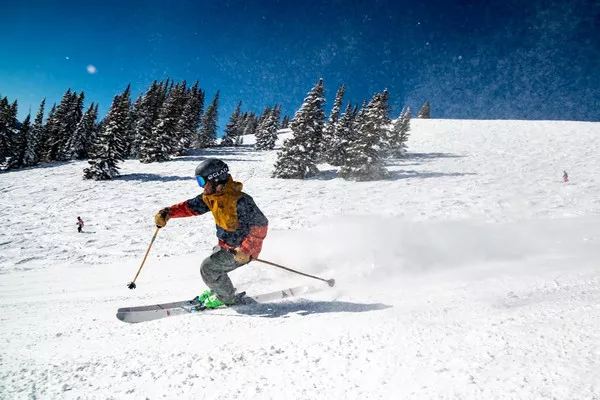Nestled within the vast expanse of winter sports lies the realm of skiing, where enthusiasts glide across snow-blanketed landscapes with grace and skill. Among the various disciplines of skiing, Nordic skiing and cross country skiing stand out as two closely related yet distinct forms, each with its own techniques, equipment, and cultural heritage. As enthusiasts and athletes alike explore these snowy terrains, understanding the nuances between Nordic skiing and cross country skiing becomes essential.
Exploring Nordic Skiing: Embracing Diversity in Technique and Terrain
Nordic skiing, often regarded as a broader category encompassing various sub-disciplines, traces its origins to the snowy landscapes of Scandinavia. Embodying versatility and athleticism, Nordic skiing encompasses a range of styles, including classic skiing, skate skiing, and even ski jumping.
At the heart of Nordic skiing lies its adaptability to diverse terrains. Whether gliding along groomed trails, navigating through wooded paths, or venturing into backcountry wilderness, Nordic skiers embrace the challenge of varied landscapes. Classic skiing, characterized by a rhythmic diagonal stride, finds its home on groomed tracks, while skate skiing involves a dynamic lateral motion akin to ice skating, suited for smoother, wider trails.
Furthermore, Nordic skiing extends its reach into competitive arenas, with events such as the Nordic Combined, which combines ski jumping with cross country skiing, showcasing the athleticism and precision required in this multifaceted discipline.
Cross Country Skiing: The Pursuit of Endurance and Exploration
In the realm of skiing, cross country skiing emerges as a testament to endurance, exploration, and communion with nature. Rooted in Scandinavia’s rich skiing traditions, cross country skiing transcends mere sport, evolving into a lifestyle embraced by enthusiasts worldwide.
Unlike its Nordic counterpart, cross country skiing often refers specifically to the classic style of skiing, where skiers propel themselves forward using a diagonal stride, aided by poles, on groomed or ungroomed trails. This traditional technique emphasizes efficiency and rhythm, allowing skiers to traverse vast distances with ease.
Cross country skiing thrives on its accessibility, welcoming beginners and seasoned athletes alike to explore snowy landscapes at their own pace. From leisurely outings through serene forests to challenging expeditions across rugged terrain, cross country skiing offers an intimate connection with the winter environment.
Moreover, cross country skiing serves as a platform for competitive endeavors, with events ranging from sprint races to marathon-length competitions, showcasing the prowess and endurance of athletes on an international stage.
Distinguishing Factors: Technique, Equipment, and Terrain
While Nordic skiing and cross country skiing share common roots and a passion for snowy landscapes, several key distinctions set them apart:
1. Technique: Nordic skiing encompasses a broader range of techniques, including skate skiing and ski jumping, while cross country skiing predominantly focuses on the classic diagonal stride technique.
2. Equipment: Nordic skiing often involves specialized equipment tailored to specific techniques and terrains, including wider skis and boots designed for skate skiing. Cross country skiing typically utilizes narrower skis and boots optimized for classic skiing.
3. Terrain: Nordic skiing embraces a wider variety of terrain, from groomed trails to backcountry wilderness, while cross country skiing predominantly occurs on groomed or ungroomed trails conducive to classic skiing.
The Evolution of Skiing Culture: Embracing Diversity and Tradition
As skiing culture continues to evolve, the distinctions between Nordic skiing and cross country skiing underscore the rich tapestry of traditions, techniques, and landscapes woven into the fabric of the sport. While each discipline offers its own challenges and rewards, they share a common thread: a profound appreciation for winter’s beauty and the joy of gliding across snow-covered terrain.
In the pursuit of excellence and adventure, skiers of all backgrounds come together to celebrate the diversity of skiing disciplines, from the precision of Nordic ski jumping to the endurance of cross country marathons. Through competition, recreation, and exploration, Nordic skiing and cross country skiing embody the timeless allure of winter sports, inspiring generations to embrace the call of the snowy wilderness.
Conclusion
In the intricate web of skiing disciplines, Nordic skiing and cross country skiing shine as beacons of diversity and tradition. While their techniques, equipment, and terrains may differ, they share a common bond forged in the snow-covered landscapes they traverse. As enthusiasts and athletes alike venture forth into winter’s embrace, they carry with them the spirit of exploration, camaraderie, and reverence for the timeless beauty of skiing. Whether gliding across groomed trails or forging new paths through untamed wilderness, Nordic skiing and cross country skiing invite us all to embrace the thrill of the journey and the serenity of the snowy expanse.
FAQs:
1. What is Nordic skiing and alpine skiing?
Nordic skiing encompasses a variety of skiing disciplines that primarily involve skiing on flat or undulating terrain. It includes cross-country skiing, ski jumping, and Nordic combined (a combination of cross-country skiing and ski jumping). Cross-country skiing is the most common form of Nordic skiing, focusing on endurance and technique over long distances.
Alpine skiing, on the other hand, is characterized by downhill skiing on steep slopes. It involves skiing on groomed trails or off-piste, with a focus on speed and technical skill. Alpine skiing typically takes place at resorts with ski lifts.
2. What is cross-country skiing called in Norway?
In Norway, cross-country skiing is commonly referred to as “langrenn,” which translates to “long journey.” This term reflects the sport’s emphasis on endurance and traversing long distances across snow-covered landscapes.
3. Can cross country skis be used for downhill?
While cross-country skis are designed for flat or gently rolling terrain, they can technically be used for downhill skiing. However, their long, narrow shape and lightweight construction make them less suitable for the high speeds and sharp turns associated with alpine skiing. Downhill skiing requires specialized equipment, including shorter and wider skis with stronger bindings and stiffer boots for better control and stability at high speeds and on steep slopes.

